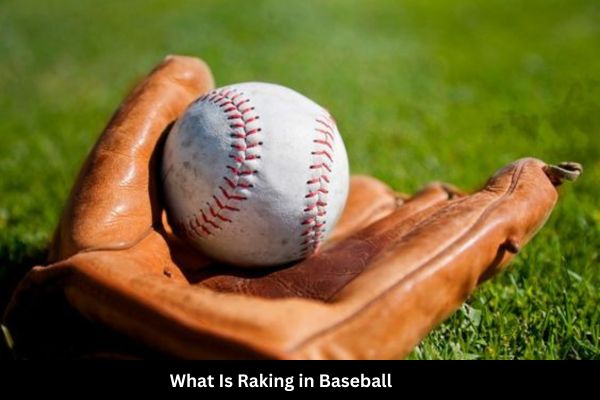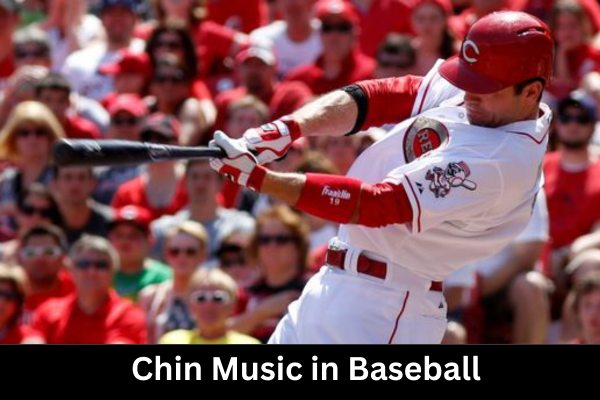 Image Credit-Pinterest
Image Credit-Pinterest
In the dynamic lexicon of baseball, the term “raking” holds a special place, embodying a blend of skill, prowess, and admiration. In essence, “raking” refers to a batter consistently hitting the ball with power and precision, often resulting in impressive offensive performances. This colloquial expression has become a cornerstone in the baseball vernacular, symbolizing a player’s ability to dominate at the plate.
The importance of “raking” extends beyond its literal meaning. It signifies a player’s capability to make a significant impact during a game, contributing to the team’s success. When a player is said to be “raking,” it implies a level of offensive excellence that goes beyond mere statistical achievement. It encapsulates the essence of a batter who not only hits well but does so with flair and style.
In the baseball community, the term “raking” sparks discussions, analyses, and debates. Fans eagerly track players known for their exceptional raking abilities, celebrating their contributions to the team’s performance. Coaches and analysts scrutinize a player’s raking prowess as a key indicator of offensive strength, influencing strategic decisions during games.
As we delve into the world of “raking,” we uncover not just a term but a cultural phenomenon that resonates with the passion and excitement inherent in the sport of baseball. It’s a testament to the ongoing narrative of skill, strategy, and the timeless pursuit of excellence at the plate.
Is ‘Rake’ Slang for a Home Run?
In the vibrant subculture of baseball slang, the term ‘rake’ has garnered intrigue and speculation, often prompting the question: Is ‘rake’ synonymous with hitting home runs? Let’s unravel the nuances of this slang usage and explore its connections to the celebrated act of sending the baseball over the outfield fence.
Exploring the Slang Usage
The slang usage of ‘rake’ in baseball extends beyond a direct correlation with home runs. While ‘rake’ does imply a batter’s exceptional hitting ability, it doesn’t exclusively denote the act of hitting the ball out of the park. Instead, it encompasses a broader spectrum of offensive prowess, emphasizing consistent, powerful hitting and the ability to accumulate base hits with authority.
Analyzing Instances Where ‘Rake’ Is Associated with Home Runs
While ‘rake’ itself is not a strict synonym for hitting home runs, it is often used in contexts where a player demonstrates an extraordinary capacity for long-ball hitting. In sports commentary and fan discussions, you may frequently encounter phrases like “He’s raking home runs,” highlighting a player’s impressive power-hitting streak.
However, it’s crucial to note that ‘raking’ isn’t solely linked to home runs; it also encapsulates a player’s overall batting excellence, encompassing line drives, doubles, and triples. The association with home runs is just one facet of the term’s multifaceted usage.
Common Misconceptions
One common misconception is that every player described as ‘raking’ is exclusively hitting home runs. This oversimplification overlooks the nuanced nature of the term and its application to various offensive achievements. ‘Raking’ signifies a holistic batting performance rather than a singular emphasis on home runs.
In conclusion, while ‘rake’ is often associated with power-hitting and home run prowess, it encompasses a broader spectrum of offensive skills. Understanding its nuanced usage adds depth to the appreciation of a player’s batting excellence in the colorful language of baseball.
Decoding ‘Rake’: Beyond Home Runs
Unraveling the layers of the term ‘rake’ in baseball reveals a rich tapestry that extends well beyond the realm of home runs. Let’s delve into the diverse interpretations of this intriguing slang, exploring how players and fans employ it in different contexts, and tracing its historical evolution within the vibrant culture of baseball.
Understanding Alternative Interpretations of the Term
Beyond the traditional association with home runs, ‘rake’ captures the essence of a batter’s all-encompassing offensive prowess. It signifies an ability to consistently hit the ball with authority, encompassing various types of hits, including line drives, doubles, and triples. In essence, ‘rake’ denotes a player’s capacity to dominate at the plate, showcasing skill and finesse in every at-bat.
How Players and Fans Use ‘Rake’ in Different Contexts
Players and fans alike wield the term ‘rake’ as a badge of honor bestowed upon hitters who consistently elevate their team’s offensive performance. In dugouts and on social media, you’ll find players acknowledging and celebrating a teammate’s ‘raking’ abilities after a particularly impressive offensive display. Fans, too, enthusiastically use the term to express admiration for their favorite players who demonstrate exceptional hitting prowess.
The contextual usage of ‘rake’ extends beyond statistical achievements; it becomes a rallying cry for team morale, embodying the spirit of offensive dominance. Whether in post-game interviews or casual fan banter, ‘rake’ serves as a dynamic descriptor that encapsulates the excitement and energy of a standout offensive performance.
Historical Evolution of the Slang in Baseball Culture
The roots of ‘rake’ as baseball slang can be traced back through the annals of the sport’s history. Emerging as a colloquial expression among players, the term gained prominence within the tight-knit baseball community. Over time, its usage evolved, mirroring shifts in playing styles, offensive strategies, and the evolving dynamics of the game.
The historical evolution of ‘rake’ reflects not only changes in baseball itself but also the enduring nature of certain linguistic traditions within the sport. From the early days of baseball chatter to modern-day commentary, ‘rake’ has stood the test of time as a dynamic descriptor of offensive prowess.
In essence, ‘rake’ is a living language within the baseball lexicon, adapting and thriving as the game continues to captivate players and fans alike. Understanding its varied interpretations and historical journey enriches our appreciation for the multifaceted nature of hitting excellence in baseball.
‘Raking’ in Softball: A Comparative Analysis
As the language of baseball spills over into the world of softball, the term ‘raking’ finds a new home, adapting to the nuances of a different diamond. In this comparative analysis, we explore how ‘raking’ transcends the boundaries between baseball and softball, examining the crossover of the term and uncovering key differences in its usage within these distinct but interconnected realms.
Examining the Crossover of the Term into Softball
The migration of ‘raking’ from baseball to softball signifies a shared linguistic heritage between the two sports. Softball players, much like their baseball counterparts, have embraced ‘raking’ as a symbol of offensive excellence. The term seamlessly integrates into the softball vernacular, acknowledging and celebrating powerful hitting performances on the smaller, faster-paced diamond.
Softball players who exhibit consistent, powerful hitting — be it home runs or well-placed line drives — are often described as ‘raking.’ The crossover of the term into softball underscores the universal appreciation for offensive prowess, irrespective of the specific nuances that distinguish the two sports.
Key Differences in Usage Between Baseball and Softball
While ‘raking’ maintains its fundamental meaning across both baseball and softball, there are subtle differences in its application within each sport’s context. In softball, where the pitching distance is shorter, ‘raking’ might emphasize quick reflexes and the ability to adapt to faster-paced pitches. The dynamics of the softball game, including the underhand pitching style, contribute to a unique flavor of offensive mastery that ‘raking’ encapsulates.
Additionally, the dimensions of the field, base paths, and the frequency of certain types of hits in softball may influence the specific attributes associated with ‘raking’ in this context. Understanding these nuances allows players, fans, and analysts to appreciate ‘raking’ in softball on its own terms while recognizing its shared roots with baseball.
In essence, the comparative analysis of ‘raking’ in softball highlights the versatility of this term, showcasing its ability to resonate across different variations of the game. As softball continues to grow in popularity, ‘raking’ serves as a bridge, connecting the rich traditions of baseball with the evolving narrative of offensive excellence in the world of softball.
What Do You Call the Batsman in Baseball?
In the intricate tapestry of baseball terminology, the player at bat is referred to by various names, each reflecting the diverse linguistic traditions within the sport. This exploration aims to clarify the terminology for the player at bat, delving into regional variations and slang that contribute to the rich, ever-evolving lexicon of baseball.
Clarifying the Terminology for the Player at Bat
The most common and widely accepted term for the player at bat is simply “batter.” This straightforward designation encapsulates the primary role of the player—swinging the bat to hit the pitched ball. Baseball’s traditional terminology often employs the term “batter” in official contexts, such as scorekeeping and rulebooks.
However, the usage of “batter” doesn’t preclude the emergence of additional terms, each contributing a nuanced perspective. Some may colloquially refer to the player at bat as the “hitter” or the “slugger,” emphasizing specific aspects of their offensive prowess. These terms, while not as universal as “batter,” are widely understood within the baseball community.
Exploring Regional Variations and Slang for Batsmen
Baseball’s rich history has given rise to regional variations and slang terms for the player at bat. In certain areas or among specific communities, you might hear variations like “stickman,” “swinger,” or “lumber.” These colloquial expressions reflect the local color and traditions ingrained in the baseball culture of different regions.
Slang terms for batsmen often draw inspiration from the action at the plate or the tools of the trade. Phrases like “lumberjack” or “lumber swinger” playfully allude to the bat’s resemblance to a lumberjack’s tool. Similarly, “stickman” highlights the player’s connection to the bat, emphasizing the crucial role it plays in offensive maneuvers.
Understanding these regional variations and slang not only adds flavor to baseball conversations but also underscores the sport’s capacity to embrace diverse expressions within its linguistic landscape. It’s a testament to the communal nature of baseball, where language evolves organically, reflecting the shared experiences and traditions of players and fans alike.
In conclusion, while “batter” remains the widely accepted term, the world of baseball is vast and dynamic, offering a spectrum of names that evoke the essence of the player at bat. Whether it’s the official designation or a playful slang term, each contributes to the ongoing narrative of America’s pastime.
Popular Culture and ‘Raking’
In the ever-expanding realm of popular culture, the term ‘raking’ from the lexicon of baseball has found its way into various forms of media, leaving an indelible mark on how the sport is portrayed, discussed, and celebrated. This exploration delves into instances of ‘raking’ in popular media and examines its impact on baseball fan culture and merchandise.
Instances of ‘Raking’ in Popular Media
The cultural resonance of ‘raking’ extends beyond the confines of the baseball diamond, making its presence felt in movies, television shows, music, and more. In sports commentary and highlight reels, broadcasters often use the term to describe standout offensive performances, enhancing the narrative and excitement around key moments in the game.
Moreover, ‘raking’ has become a staple in sports-themed movies and TV dramas, where characters aspire to achieve the pinnacle of hitting excellence. The term is seamlessly integrated into scripts, reinforcing the cultural significance of offensive prowess in the sport. Whether it’s a climactic home run scene or a montage of powerful hits, ‘raking’ serves as a visual and linguistic symbol of batting mastery.
Impact on Baseball Fan Culture
For baseball enthusiasts, ‘raking’ has become more than just a descriptive term; it’s a badge of honor for players who consistently display offensive excellence. Fans embrace ‘raking’ as a marker of their team’s strength, proudly identifying with players who dominate at the plate. Social media platforms amplify this cultural impact, with fans using the term to express admiration, excitement, and camaraderie.
The concept of ‘raking’ has become ingrained in the rituals and traditions of baseball fan culture. From custom jerseys celebrating star ‘rakers’ to fan-made signs displaying the term at stadiums, the cultural imprint of ‘raking’ is visible in the collective identity of baseball fandom. It creates a shared language through which fans celebrate and discuss the sport, fostering a sense of community and passion.
Impact on Merchandise
The marketability of ‘raking’ extends to baseball merchandise, where the term adorns a myriad of products. T-shirts, caps, and memorabilia featuring slogans like “All About That Rake” or “Rake City” have become popular among fans who want to wear their support for players known for their hitting prowess. The term’s catchy and dynamic nature makes it an ideal candidate for creating eye-catching and spirited merchandise that resonates with a broad audience.
In conclusion, ‘raking’ has become more than a baseball term; it’s a cultural phenomenon that transcends the game itself. Its presence in popular media, influence on fan culture, and integration into merchandise underscore the enduring impact of this term, reinforcing its status as a symbol of offensive mastery and a dynamic element within the broader narrative of baseball.
Conclusion
In the intricate tapestry of baseball language, ‘raking’ emerges as a vibrant thread that weaves together the narrative of offensive mastery. This exploration has peeled back the layers of the term, revealing its dynamic nature and diverse applications within the broader baseball community.
‘Raking,’ while often associated with home run prowess, extends beyond this narrow definition. It encompasses a batter’s ability to consistently hit with power and precision, showcasing offensive excellence in various forms. The term’s usage in baseball and softball, regional variations, and its presence in popular culture all contribute to its rich and nuanced landscape.
The term holds profound significance in the hearts of players, fans, and enthusiasts. It serves as a marker of excellence at the plate, a celebration of offensive prowess that goes beyond statistical achievements. ‘Raking’ has become embedded in fan culture, influencing rituals, merchandise, and creating a shared language that unites baseball aficionados across diverse backgrounds.
In the broader baseball community, ‘raking’ transcends its literal meaning to symbolize the timeless pursuit of hitting mastery. It represents the excitement, passion, and cultural identity woven into the fabric of America’s pastime. As players continue to dazzle with powerful hits and fans cheer on their favorite ‘rakers,’ the term remains a dynamic expression of the enduring spirit of baseball.
How much did you like From Slang to Softball: Understanding ‘Raking’ in Baseball? Share your view in the comment box. Also, share this blog with your friends on social media so they can also enjoy it. For more blogs, visit baseballpropicks.com
Related Article:
- Cultural Impact: Baseball Caps in Fashion
- Understanding the Basics of Baseball
- Historical Moments in Baseball
- Inside Baseball: The Core Cover
- Best Baseball Gloves by Position

Meet Daniel Anderson, the heart and soul behind Baseball Pro Picks. At 49, Daniel’s life has revolved around baseball, a passion that’s as strong today as it was when he first fell in love with the game. Living in the USA, Daniel has dedicated countless hours to watching, analyzing, and understanding every pitch, hit, and home run, making almost no game missed. His deep-rooted love for the sport is matched only by his commitment to sharing insightful, expert analysis with fellow baseball enthusiasts. With decades of experience and a keen eye for the game’s nuances, Daniel brings a unique perspective that enriches Baseball Pro Picks. Trust Daniel to guide you through the intricacies of baseball with the authority and trustworthiness of a true aficionado.












